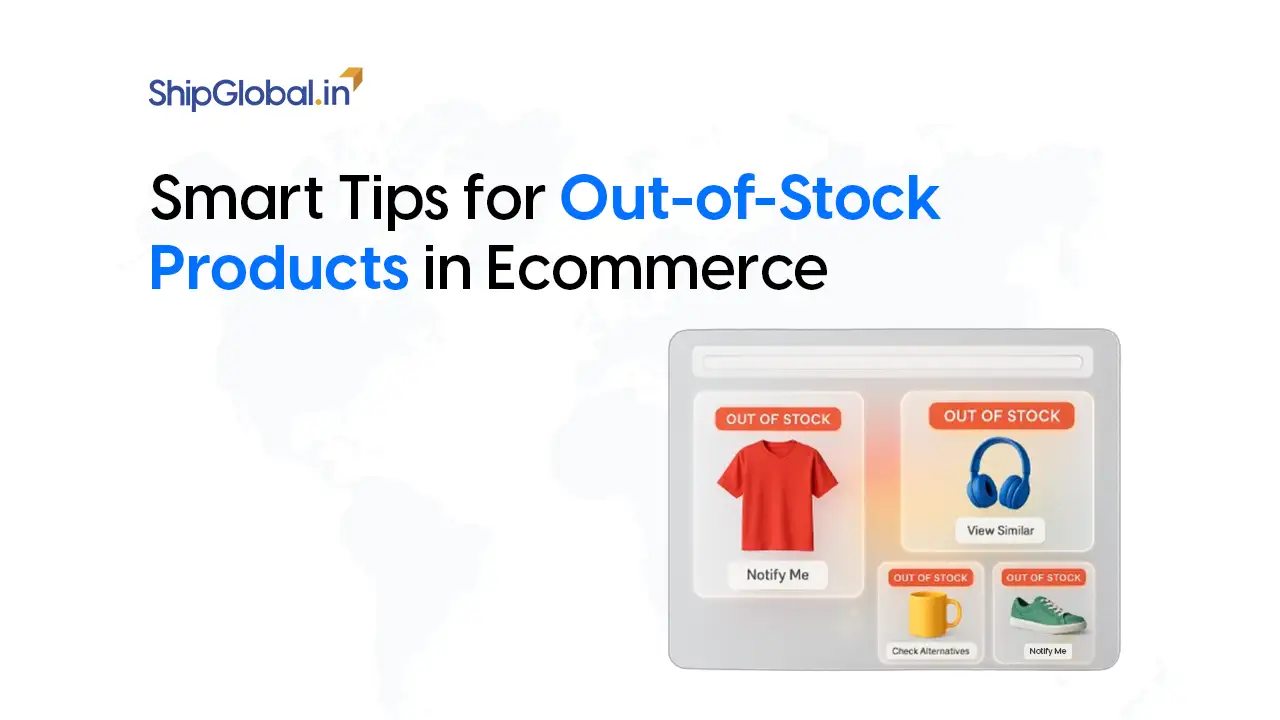EDI, short for Electronic Data Interchange, is a technology that allows two or more businesses to exchange information in a standardized electronic format. In the context of ecommerce, EDI in Ecommerce means automating the exchange of key business documents, such as purchase orders, invoices, shipping notifications, and inventory updates, between your online store and your trading partners.
Rather than emailing PDFs, sending faxes (yes, some businesses still do), or manually entering order details into spreadsheets, EDI lets your system “talk” directly to your suppliers’, warehouses’, or logistics partners’ systems. It’s fast, accurate, and requires no manual work once set up.
This structured business document exchange forms the backbone of B2B electronic communication in the digital retail world. For ecommerce businesses, it’s a game-changer, enabling you to scale faster, operate more efficiently, and keep your customers happy with seamless fulfillment.
Why Electronic Data Interchange in eCommerce Matters More Than Ever
Let’s face it: ecommerce isn’t getting any simpler. Whether you’re managing one store or a multichannel empire across Amazon, Shopify, Walmart Marketplace, and your own DTC site, the demand for speed, accuracy, and agility is growing daily. Manual processes can’t keep up.
Imagine this: A customer places an order on your site. You manually send the order details to your supplier, who takes a day to respond. You send an invoice to your accounting software. The shipment gets delayed. The customer emails you. You check the tracking manually. Chaos.
Now, contrast that with a system powered by EDI in Ecommerce. The customer places an order. Your system automatically sends an EDI 850 purchase order to the supplier. Within minutes, the supplier sends back an EDI 855 order acknowledgment, confirming the order. As soon as the package ships, you automatically receive an EDI 856 shipment notice with tracking information. Shortly after, the system generates an EDI 810 invoice and sends it to your finance team. Meanwhile, the entire process runs without any human intervention. As a result, your customer receives their order faster. In addition, you reduce errors and, ultimately, save valuable time.
That’s the power of ecommerce automation via EDI.
How EDI Works in the Online Retail Ecosystem
So, let’s go deeper. What does this look like in a real-world ecommerce setup?
When a customer places an order, your eCommerce platforms, such as Shopify, Magento, or WooCommerce, trigger an event. With EDI integration in place, that event immediately generates an EDI 850, a standardized purchase order document. Then, your system sends the EDI 850 directly to your supplier’s or manufacturer’s system, ensuring the order is processed without delay.
They receive it, process the order, and send back an EDI 855 order acknowledgment, confirming the order’s receipt and acceptance. Once the item ships, they send an EDI 856 Advance Ship Notice, containing package contents, tracking numbers, and delivery estimates.
Your accounting or ERP system automatically receives the EDI 810 invoice. It processes the payment, updates the inventory, and notifies the customers. What once took days with manual emails and spreadsheets now takes only minutes.
Every step relies on structured business document exchange, eliminating the bottlenecks and inaccuracies that plague traditional B2B processes.
EDI in Ecommerce Isn’t Just for Big Retailers Anymore
One of the most common misconceptions is that EDI in Ecommerce is only for enterprise-level companies dealing with massive order volumes. While big retailers like Walmart, Target, and Home Depot have long used EDI, today’s EDI platforms now offer greater flexibility and accessibility, making them a practical solution for businesses of all sizes.
Thanks to cloud-based EDI solutions, even small and mid-sized online retailers can benefit from the same technology without the heavy upfront investment. These modern platforms are scalable, user-friendly, and often include pre-built integrations with ecommerce platforms, ERPs, and 3PL providers.
This means that a Shopify-based store doing $100,000 in monthly sales can now implement EDI software for online stores and compete operationally with businesses ten times their size.
And for growing retailers, that’s a game-changer.
EDI and ONDC: Connecting to India’s Open Digital Commerce Ecosystem
As India rapidly transforms its digital economy, the Open Network for Digital Commerce (ONDC) is emerging as a game-changer. ONDC is a government-backed initiative that aims to democratize digital commerce by creating an open, interoperable network where buyers and sellers can transact seamlessly regardless of the platform they use. In this context, EDI in Ecommerce becomes a critical enabler. By integrating EDI with ONDC protocols, sellers can automate the exchange of order data, inventory updates, invoices, and shipment details across the open network. This helps businesses participate in ONDC with minimal manual effort, ensuring faster fulfillment, better accuracy, and scalable operations. For ecommerce businesses looking to tap into India’s massive consumer base through ONDC, EDI integration is a powerful way to stay compliant, competitive, and connected in a decentralized marketplace.
EDI and Dropshipping: A Perfect Match
If you’re running a dropshipping business, then EDI in Ecommerce can help you take your operations to the next level. One of the biggest challenges in dropshipping is maintaining visibility and control over what’s going on between your store and your suppliers.
With dropshipping EDI integration, your ecommerce system and your supplier’s system can work in sync. Orders are automatically routed to the supplier. Shipping updates are shared in real time. Inventory levels are updated regularly through inventory updates through EDI, ensuring that you don’t oversell or disappoint customers with out-of-stock items.
This level of automation creates a smoother customer experience and reduces the headache of trying to manage multiple supplier relationships manually.
Real-Time Stock Synchronization and Electronic Catalog Exchange
Another powerful benefit of EDI in Ecommerce is real-time data sharing. Through real-time stock synchronization, your product listings are always accurate, reflecting actual inventory levels, not guesswork.
Similarly, through electronic catalog exchange, your suppliers can push updated product data directly into your ecommerce system. That means pricing updates, product descriptions, new SKUs, or discontinued items are all updated automatically, saving you countless hours of manual admin.
When your catalog is fresh and your inventory data is correct, your store performs better, your customers are happier, and your conversion rates improve.
ERP and EDI Integration: Building a Seamless Backend
For growing ecommerce businesses, connecting EDI with backend systems like ERPs (Enterprise Resource Planning) is crucial. ERP and EDI integration allows for centralized control over orders, finances, inventory, and customer data.
Whether you’re using NetSuite, Microsoft Dynamics, QuickBooks, or Odoo, integrating EDI with your ERP can eliminate the need for double entry, reduce errors, and create a fully synchronized business backend. From order entry to financial reconciliation, everything flows smoothly across departments.
This creates a leaner, more responsive business, and ultimately, better service for your customers.
EDI vs API in Ecommerce: What’s the Difference?
A common question is: if APIs exist, why do we still need EDI?
The truth is, both have their place. APIs are excellent for real-time, lightweight data exchange. They’re fast, flexible, and ideal for functions like customer authentication, price lookups, or adding items to a cart.
But when it comes to bulk document exchange, especially with standardized formats used across suppliers and logistics partners, EDI in e-commerce still reigns supreme. EDI is designed for transactions like EDI purchase orders, EDI invoices, and EDI shipping notices, which require precision, standardization, and consistency.
In many ecommerce environments, the ideal solution is a hybrid one: use API vs EDI in Ecommerce based on the function and the partner.
The Future of Ecommerce is Powered by EDI
As e-commerce evolves, customer expectations are getting higher. Faster shipping, real-time inventory, transparent tracking, and seamless returns are now the baseline. To meet these demands, online retailers need systems that talk to each other, act fast, and operate with precision.
That’s exactly what EDI in Ecommerce offers. It’s no longer a “nice to have” or a “corporate-only” solution. It’s a foundational tool that enables smart, scalable, automated ecommerce.
Whether you’re a small brand just getting into B2B selling or an established online store managing a large supplier network, electronic data interchange in eCommerce can help you stay competitive, agile, and profitable.
Final Thoughts: Is EDI Right for Your Store?
If you’ve made it this far, chances are you’re already seeing the benefits of EDI in Ecommerce for your own business. It simplifies operations, reduces costs, eliminates errors, and gives you the automation edge you need to grow.
From structured business document exchange to cloud-based EDI solutions, from real-time stock synchronization to dropshipping EDI integration, this technology is built to help ecommerce businesses run smarter.
So whether you’re looking to optimize order fulfillment, improve inventory accuracy, or scale with confidence, implementing EDI in e-commerce might just be the smartest move you make this year.
FAQs
EDI improves speed, accuracy, and efficiency in order processing. It eliminates manual work, reduces errors, speeds up fulfillment, and keeps customers happier with faster service and real-time updates. It’s especially vital for scaling operations and managing high volumes of orders across channels.
Not anymore. Thanks to modern, cloud-based EDI platforms, small and mid-sized ecommerce businesses can now afford and benefit from EDI. These platforms often come with pre-built integrations for popular ecommerce platforms, ERPs, and logistics systems.
EDI helps automate the communication between your store and your dropshipping suppliers. Orders are sent instantly, shipping updates are tracked in real time, and inventory levels are synced regularly. This reduces delays, prevents overselling, and enhances the customer experience.
APIs are ideal for real-time, lightweight tasks like checking prices or logging in. EDI, on the other hand, is designed for exchanging bulk, standardized documents such as orders and invoices. Most modern ecommerce businesses use both in a hybrid setup—choosing the right tool for the right function.
ONDC (Open Network for Digital Commerce) is an Indian government initiative that creates an open, interoperable network for digital commerce. EDI plays a key role in helping sellers integrate with ONDC by automating the exchange of business data like orders, shipping updates, and invoices—making it easier to participate in this new decentralized marketplace.









